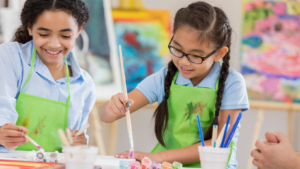In the ever-evolving landscape of education, liberal arts stand as a beacon of holistic learning.
Join us as we explore the current state of liberal arts education news, and what the future may hold for this versatile field.
Liberal Arts Education News
The landscape of liberal arts education news exhibits dynamic changes, continuously bringing forth innovative trends. This section delves into some noteworthy occurrences and adaptations within liberal arts education news.

Educators today lay emphasis on problem-solving methods, deeming them crucial for liberal arts education news. They focus on empowering students with analytical skills by incorporating real-life examples such as discussing existential problems, global conflicts, and social scenarios. Case studies indeed serve as a pedagogical tool, enabling students’ engagement in analytical and critical thinking. It’s a stark departure from the traditional lecture-based learning approach and promotes active learning.
Moreover, dialogic education, a method of engaging students in dialogue about course material, is gaining traction. It aligns well with the liberal arts ethos of fostering critical thinking through rigorous debate and contemplation.
Technological Integration in Classrooms
The advent of technology in liberal arts education news paves the path for revolutionizing classroom learning. Installation of digital tools—interactive whiteboards, tablets—exemplify this development. These tools foster interactive learning, allowing students to grasp complex problems more accessibly and efficiently.

Moreover, institutions increasingly favor virtual learning environments, delivering online courses, enhancing accessibility for distance learners, and facilitating flexibility. Such digital learning platforms encourage a blend of learning styles, including asynchronous and synchronous learning methodologies.
Furthermore, technology opens avenues for resourceful learning materials. Podcasts, educational videos, online journals enrich resource pools, contributing significantly to knowledge enhancement in creative ways. Students can delve into various topics, expanding the purview of their learning and understanding. Universities are pioneering this instruction shift, pushing the boundaries of conventional education paradigms.
Impact of Economic Factors on Liberal Arts Colleges
Economic factors bear significant influence on the functioning and sustainability of liberal arts colleges, encompassing elements such as tuition fees, financial aid opportunities, enrollment trends, and demographic shifts. Amidst a changing economic landscape, it’s crucial for these institutions to adapt swiftly to ensure their survival.
Tuition Changes and Financial Aid Opportunities
Tuition adjustments, notably increases, regularly impact the accessibility and affordability of a liberal arts education. The College Board reported that for the 2020-2021 academic year, the average tuition and fees for private colleges were $37,650, representing a consistent rise over the years. This trend frequently challenges the economic diversity among students and leaves colleges grappling with a widening accessibility gap.

Financial aid, therefore, becomes a vital tool for liberal arts colleges to maintain economic diversity among their student bodies.
Fluctuating enrollment rates correlate directly with the economic environment. Data from the National Student Clearinghouse Research Center indicates that undergraduate enrollment in liberal arts programs declined approximately 4.5% during Fall 2020, fueled in part by the economic strain of the COVID-19 pandemic.
Demographic shifts present their own unique challenges and opportunities for these institutions. The Western Interstate Commission for Higher Education (WICHE) forecasts a declining number of high school graduates over the next decade, primarily due to lower birth rates.
Must Know
The enduring value of a liberal arts education news can’t be understated. It’s not just about academic growth, but also about fostering skills that are in high demand in today’s evolving job market. The ability to adapt, think critically, and solve problems are just a few of the skills liberal arts graduates bring to the table. Despite economic challenges and demographic shifts, liberal arts colleges continue to adapt and evolve, integrating technology while staying true to their humanistic roots. They’re also addressing skill gaps, ensuring their graduates are prepared for a wide range of career opportunities. Ultimately, a liberal arts education isn’t just about getting a degree, it’s about continuous learning and personal growth. It’s an investment in one’s future, opening doors to numerous possibilities and paving the way for lifelong success.
